Located at 236 South Broad Street, the building that has always house Hammer’s in Scottsboro was built in 1922 by Cecil Word. It is a two-story, painted brick building with four groups of double windows on second floor. The ground floor features glass display windows. Anita Kern whose father established Hammer’s in Scottsboro, notes that the original store was only 18 feet wide (see the 1948 interior photo below). Anita sent these details about the evolution of this building:
The two-story building that is now the main part of store was built by Cecil Word in 1930's I think…. Hammer's opened in 1948…. In the two-story Word building, Hammer's is on the left, then a staircase to the upstairs. Upstairs held various offices and was a ‘red light’ area at one point according to Dad. It also held the first Catholic Church (Father Hogarthy) sometime after mid 50's. In 60's Dad rented the entire 1st floor and redid the front to the beige tile that I have just had removed back to original brick. At that point they moved the stairway to the far left. Later, Dad rented the upstairs and turned the stairs to open inside the store (still the same today).
Hammers is a chain of family owned department stores with locations in Ft. Payne, Scottsboro, Guntersville, and Albertville AL and in Winchester, Clinton, Wartsburg, South Pittsburg, and Sevierville, TN (Albertville and Guntersville are now closed).
According to the Hammer’s web site (www.hammersdepartmentstore.com), “in 1942, A. B. Hammer Sr. opened the first Hammer’s store in Guntersville, AL. His eldest daughter, Helen Hammer, was at the University of Alabama and in 1945, married Herbert V. Kern. Herb had enlisted in the US Army Air Force and attended Presbyterian College while awaiting deployment. Just days after their wedding, he was shipped to the Pacific where he flow on B-29s for the remainder of WWII. In 1947, he and Helen moved to Haleyville, AL to open the second Hammer’s store. It was only a year before they moved again to open Hammer’s Scottsboro in March, 1948. Since then, more stores have opened in Alabama and Tennessee. Today all nine are operated by 2nd, 3rd, and 4th generation family members. Herb and Helen still operate Hammer’s on the square in Scottsboro. It is well known for its great bargains, latest styles, and the ‘creaky’ wooden floors.”
Herb died in 2015 after several years of declining health. His daughter Anita now managers the Scottsboro Hammer’s store.
Current view: Hammers
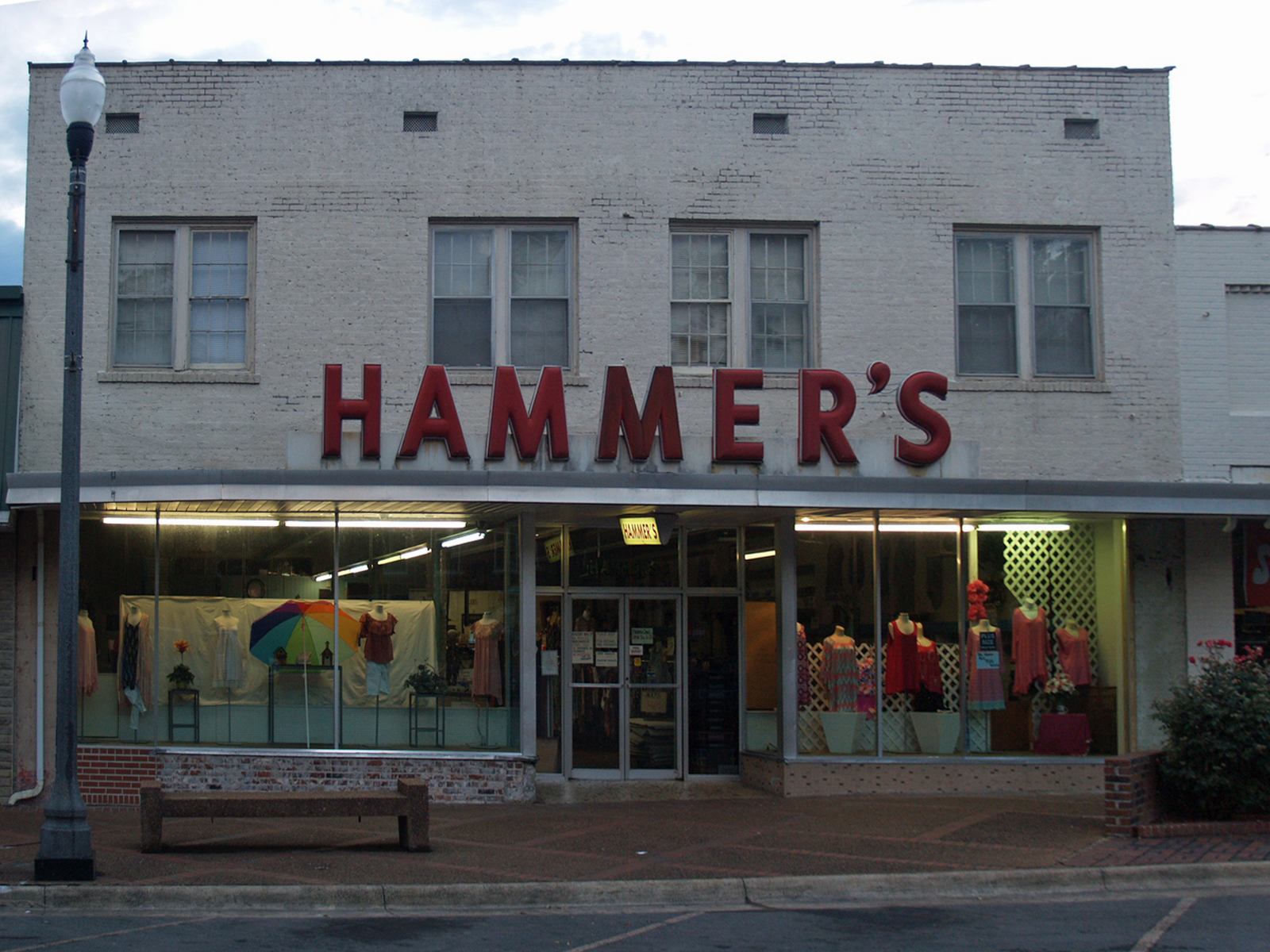

Early Catholic church in Scottsboro
As Anita noted earlier, the first Catholic congregation in Scottsboro met in one of the front rooms over Hammers. Claire “Koochie” Evans Quinlivan also recalls the early days of the Catholic church in Scottsboro. She says that her sister, Joan Harbin, raised in Mobile, was the first Catholic in Scottsboro. When the church was started, there were four regular attendees: Herb Kerb, Anna Rosa Necklas, SOMEONE, and Joan Harbin. The small church met every Sunday morning. Services were conducted by various mission priests from Guntersville and Cullman. Koochie remembers that the usual priest was a real stickler for ritual and, for example, wanted fresh flowers in the meeting room every meeting. “You would have thought he was conducting services in a cathedral,” Coochie remembers. She also recalls that one of the priests brought a Siamese cat on a leash with him to the services.
1950: Hammers from the JCHS yearbook
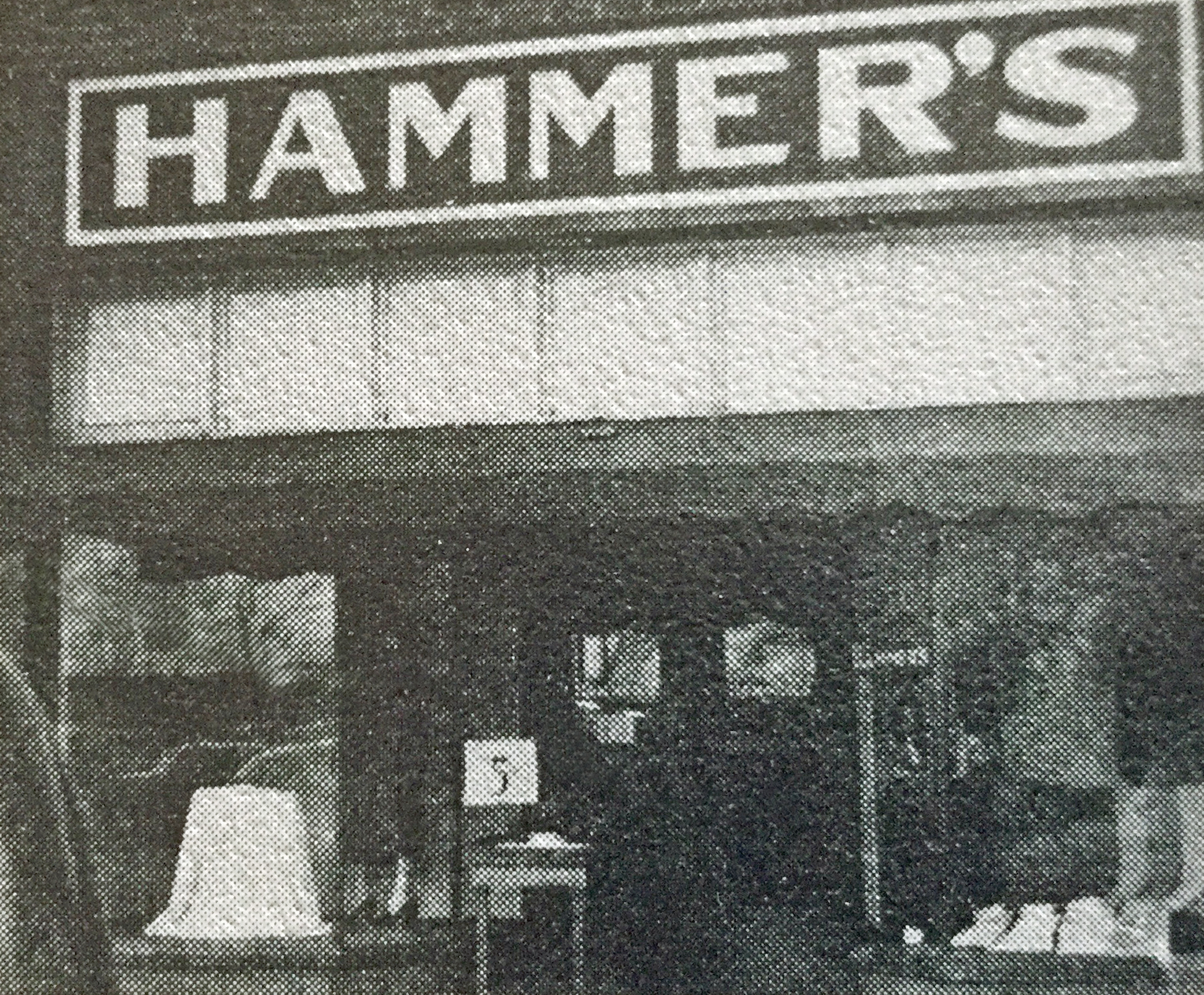
1950 Hammers with businesses upstairs
For the discussions of this side of the square that follow, study this 1950s photo carefully:

As Anita Kern noted in her discussion, Hammers in the early days had stairs that went down the middle of the current store, providing access to businesses located on the second floor. Here is a list of those businesses that can be verified by year. This old external stairway can be seen in the 1958 photo below. Before 1960, Anita remembers, one of the “businesses” above Hammers was the first Catholic church in Scottsboro. This would have been about 1950. These tenants above Hammers can be documented using telephone books and city directories:
1960
- Emergency Aid Insurance Company
- Pioneer Life and Casualty
- Mutual Savings Life Sou Benefits
- R. B. Derrick Insurance and Real Estate
- Church of Jesus Christ of Latter-Day Saints
- Globe Life Insurance Company
1965
- Emergency Aid Insurance Company
- Interstate Life and Accident Insurance Company
1972
- Lee H. Gamble Lab
- Independent Life and Accident Insurance Company
Mapping current Hammers onto 1950s Hammers
It is important to note that the current Hammers store encompasses a number of addresses that are now gone:
Hammers Main Store
- 236 Was Hammers from the beginning and still is. The original 18-foot wide store. Quarter 1 and 2 of the current main store.
- 232 The third quarter of the main store building. In the 1950s, this housed the City Shoe Store.
- 230 The fourth quarter of the main store. It was occupied by Scottsboro Produce Company in the early 1950s. This store is shown in a photo below.
Hammers Annex 1
- 228 The left half of the first Hammers Annex. The location of the Blue Moon Cafe though about 1967 when this space became part of Hammers, when 228 disappeared as an address.
- 226 The right half of the first Hammers Annex. Location of the business called Harvey Henshaw in the early 1950s. Home to Economy Auto in 1966 and to City Shoes in 1965. By 1967, this is no longer an address.
Hammers Annex 2
- 222: The left half of the second Hammers Annex. In the 1950s and before, this was The Coffee Shop. This was the only building in this space until the 2nd Hammers Annex building was built. In 1965, it became David Lee’s but it was only half the space of the Coffee Shop. This address disappeared in 1990 when this space became Hammers Annex 2.
- 224 The right half of the second Hammers Annex. In the 1950s this was part of the Coffee Shop. In 1972, it became a restaurant space and included first, the reborn Blue Moon Cafe and second Bobby’s Real Burger. This address disappeared in 1990 when this space became Hammers Annex 2.
Mapping 1950s Hammers onto 1931 Hammers
Remember that Cecil Word built the Hammers Building in 1922, even though Hammers did not open until 1948. If we look at details from the 1931 Scottsboro Boys photo of the west side of the square, we can still find our anchor points: the Hammers building on the left and the First National Bank Building on the right. In between, not much is recognizable. The buildings that we know from the 1950s—Reid Sundries, Gist Jewelry, the Ritz, Hollis Dry Goods, Keeble Grocery, and Elmores—make up a single building that covers addresses 220-208 constructed about 1931-32 known as the Word Block. The photo below shows the west side of the street in 1931, immediately before the buildings shown here were replaced by the Word Block.
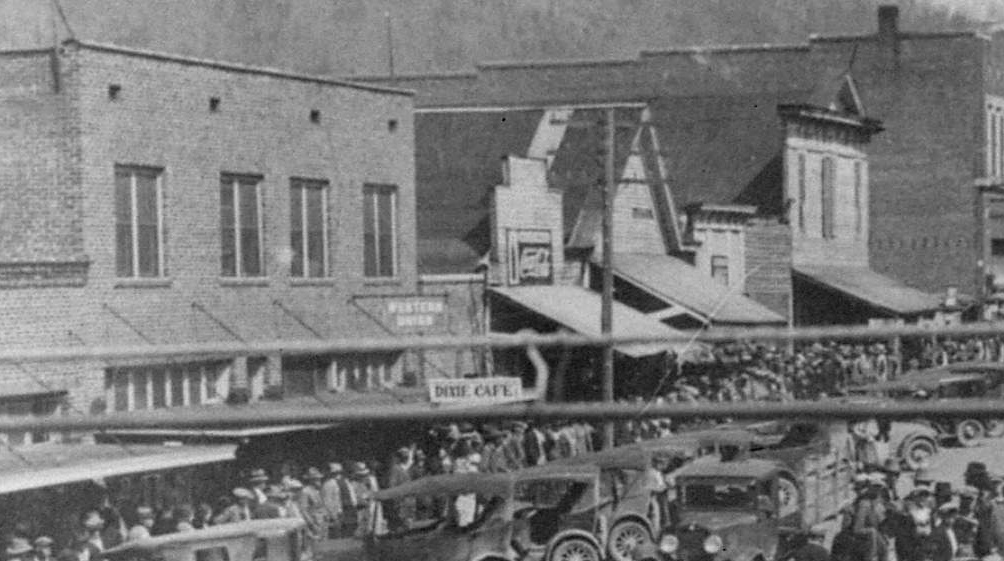
Let’s look at the buildings found at those addresses prior to 1930.
- 226-228 (Hammers Annex 1/Early Blue Moon/Harvey Henshaw): Dixie Cafe and Unknown. If you look carefully, you can read Dixie Cafe and see the Western Union sign. Those same two signs are visible in this photo that Charles Mccutcheon posted on the JCHA Facebook page, which generated a lot of discussion.
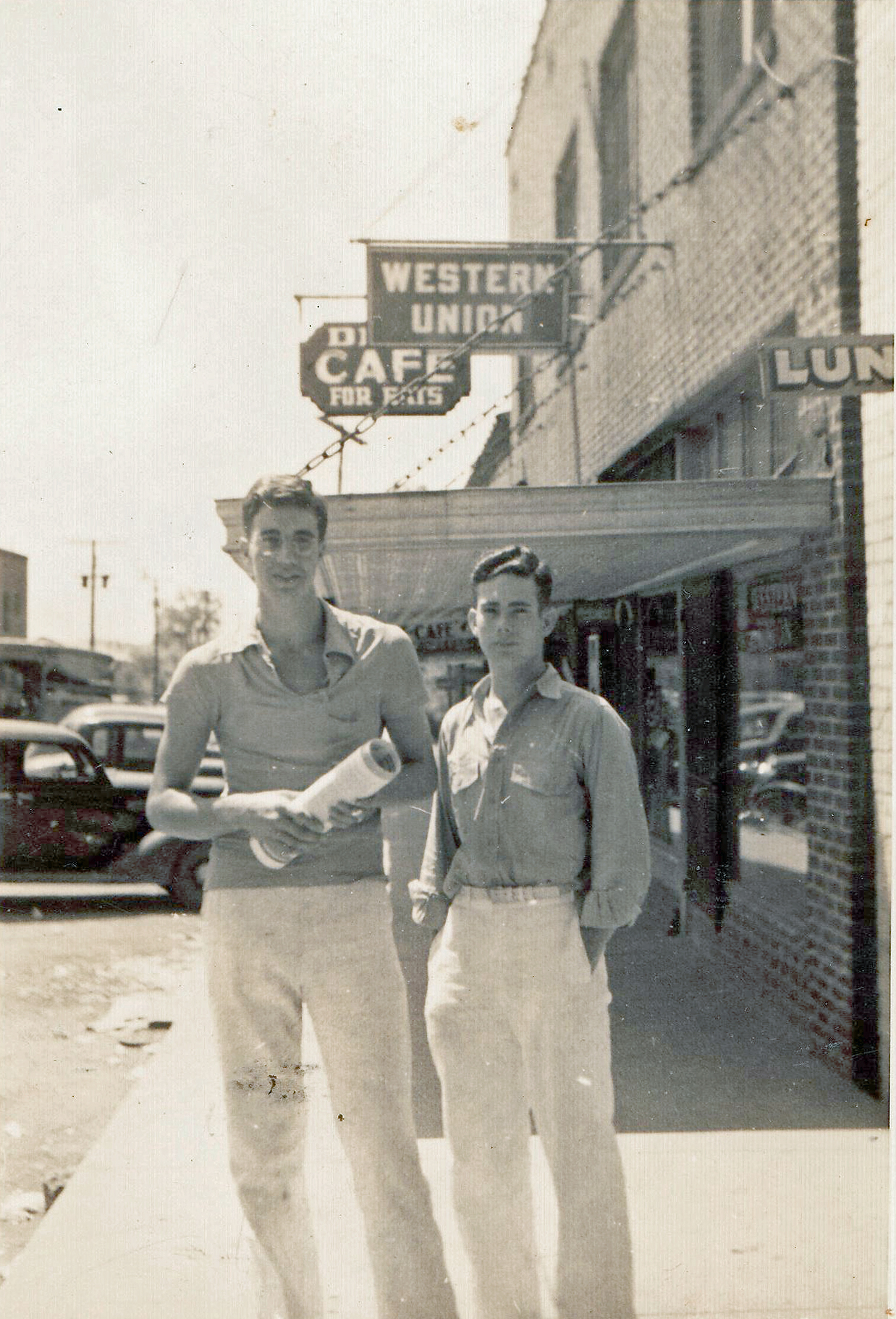
Ann Chambless said, “The Dixie Cafe was on the West side of the square and was owned by G. M. Waller and Hugh Swaim in the 1930s.” Arnold Wheeler reasoned that, “I looked for clues and the only thing I could find was the window placement in the upper part of the building in the background. It was hard to determine from the picture whether they were single windows or double windows. After looking at all the buildings around the Square, I have concluded they are double windows. The only building with double windows in a similar pattern is the building currently occupied by Hammers.” And this detail of the 1931 shot indicates that he was right.
The Unknown building is a lower, one-story frame building with a stair-step top, a broad, low awning, and a Coca Cola sign. Wish I knew.
- 222-224 (Hammers Annex 2/Coffee Shop/Blue Moon): Caldwell’s Meat Market. This is a one-story building with a gabled roof. If have found another photo of this building where the sign “Caldwell” can barely be read. Notice in this First Monday photo by Thomas M. Shipp that the remaining buildings to the left of Caldwell Meat Market have been torn down and replaced by the shiney, new Word Block building. The distinctive Ritz sign has not yet been installed, so this photo was taken after 1931 and before 1936.
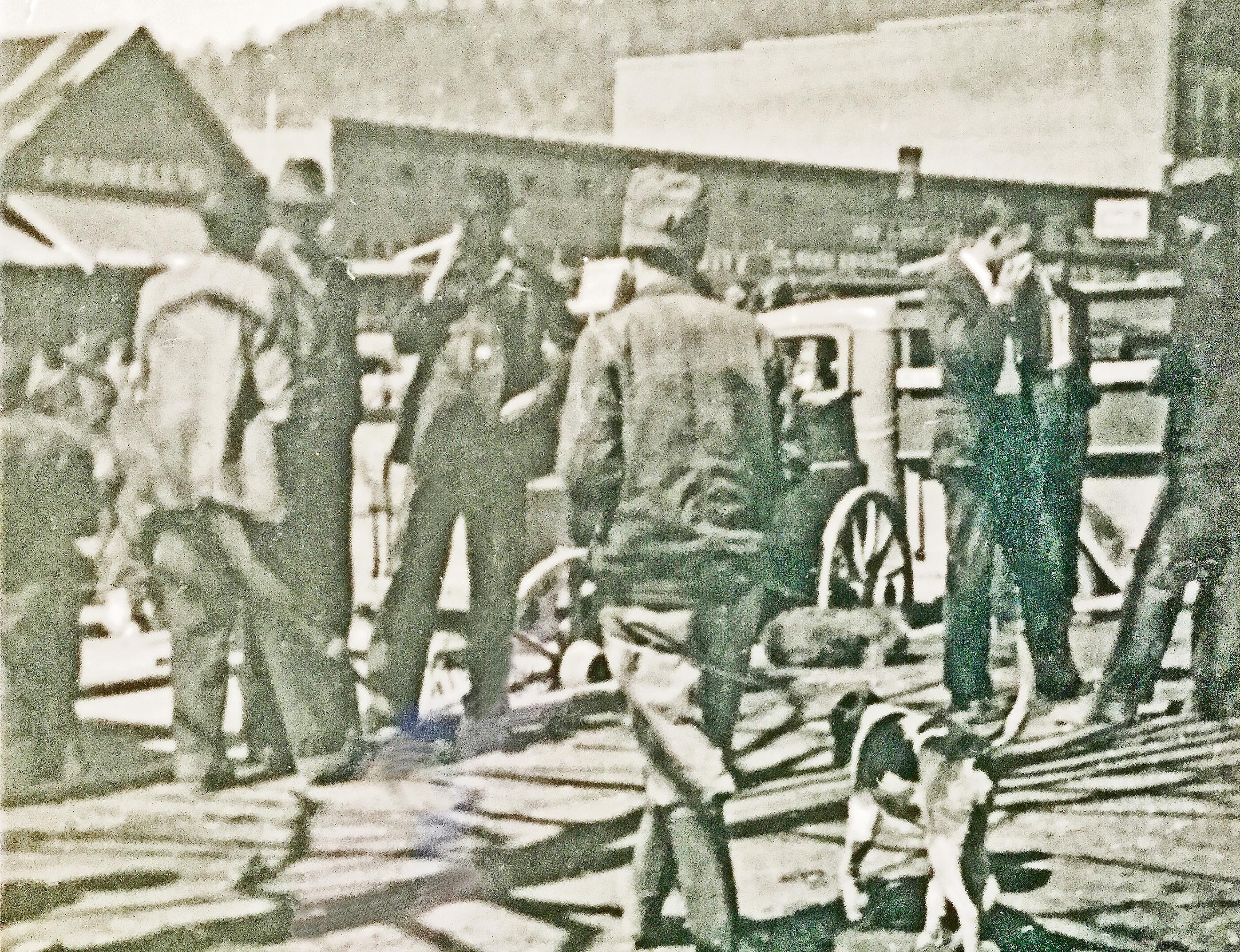
- 220-216 (Reid Sundries/Gist space): Unknown This is a narrow, brick building with an over-size formal cornice. No idea.
- 214-212 (Ritz/Hollis space): Unknown This is a narrow plank building with the top of a door or window evident in the photo. No idea.
- 210- 208 (Keebles/Elmores space): A large two-story building with a gable above the cornice. It seems to be brick with two single windows on either side of a double window and a broad awning. It cannot be determined whether this building abuts the First National Bank Building beside it, or whether there is space between the buildings. No idea.
Hammers soon after it opened in 1948
The customer with the baby on the left is unidentified. The baby is Clemons Foshee. Hammer’s employees are, from Left to Right, unidentified, Catherine Harry, and Herb Kern (age 25).
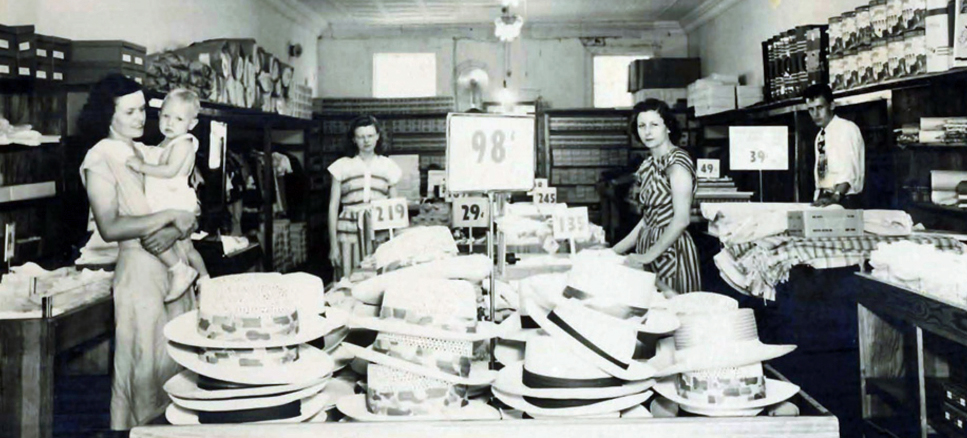
1950s Scottsboro Produce Company and Blue Moon
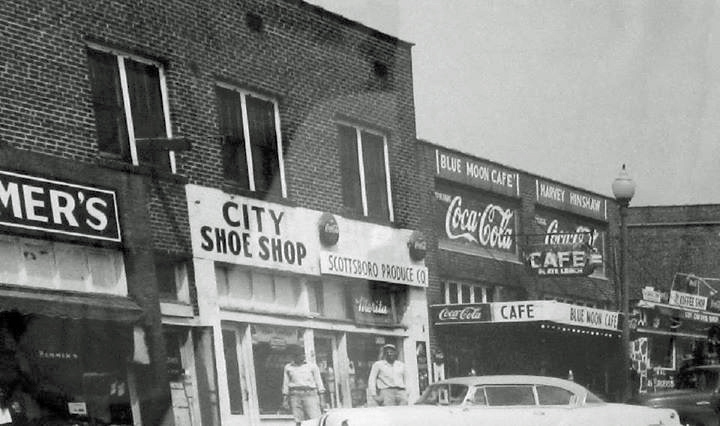
Hammers 1955 from The Reminder

1958 Hammers during homecoming parade
Bill Bradford took this photograph. The homecoming queen riding in the car is Patricia Proctor.
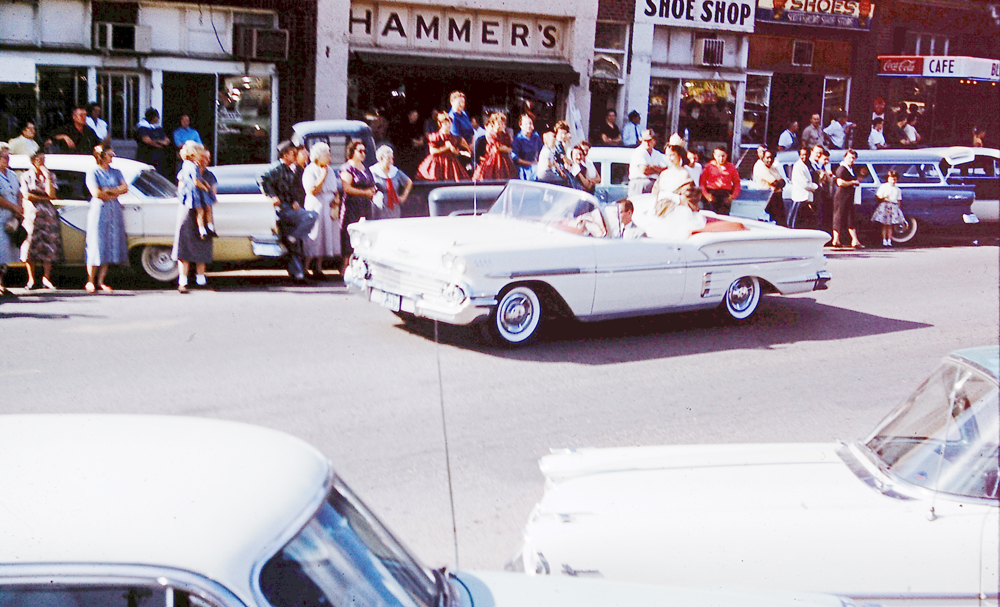
The Hammers Extended Family in the Early 1960s
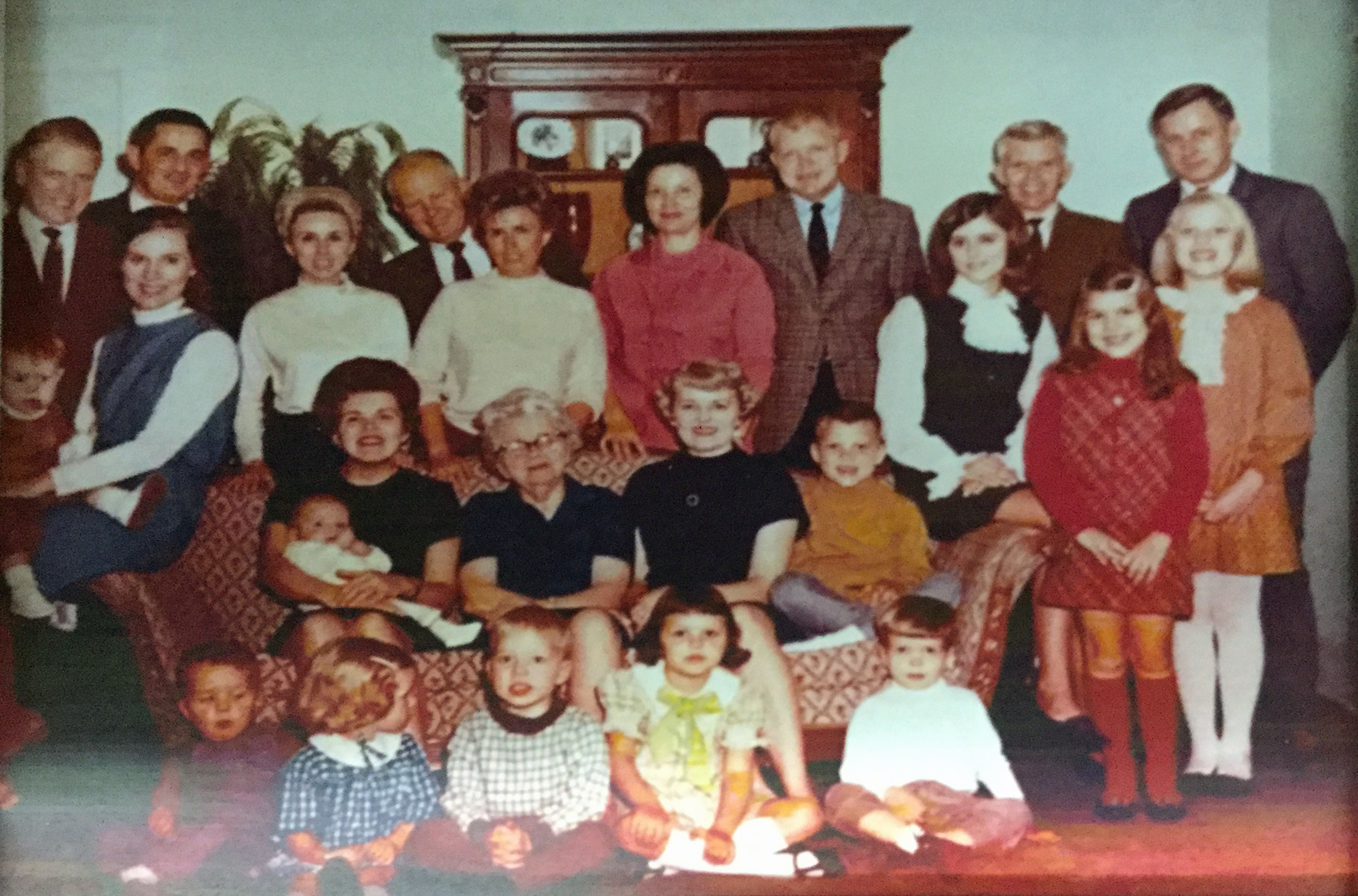
The first Hammers Store, located in Guntersville (no longer open)
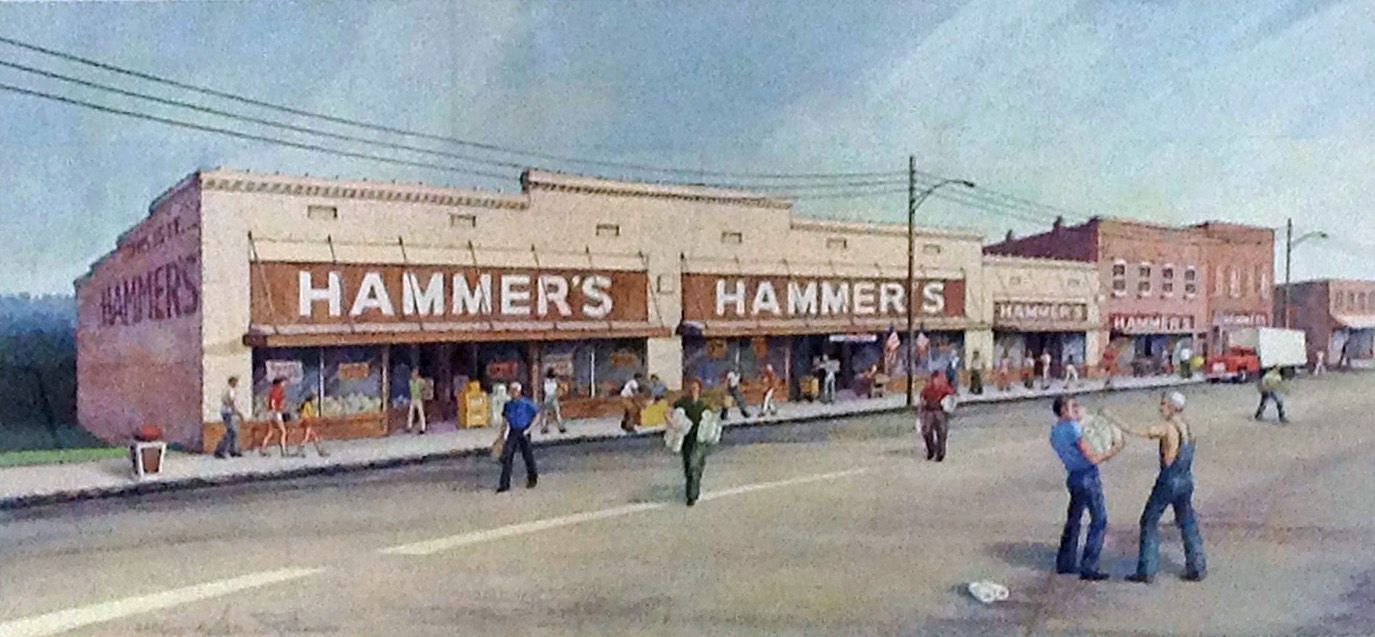
Photo of Mr. and Mrs. Kern from 2014

Tales of Hammers
Anita Kern remembers going to the Ritz when she was young. Her father would allow her and her young friends to sit up front alone, but he sat in the back. When she grew older, she and her friends Jordan Jacobs, Mary Campbell, and Beverly Smith would go to the Ritz while Mr. Kern worked late at Hammers waiting to take them home. When the movie was over, they would knock on the door and Mr. Kern would let them into the dark Hammers store. If he was not quite done with his work, the girls would climb into the window and pretend to be mannequins. When people would stop at look at clothes being modeled , they would move suddenly and watch the startled people outside jump.